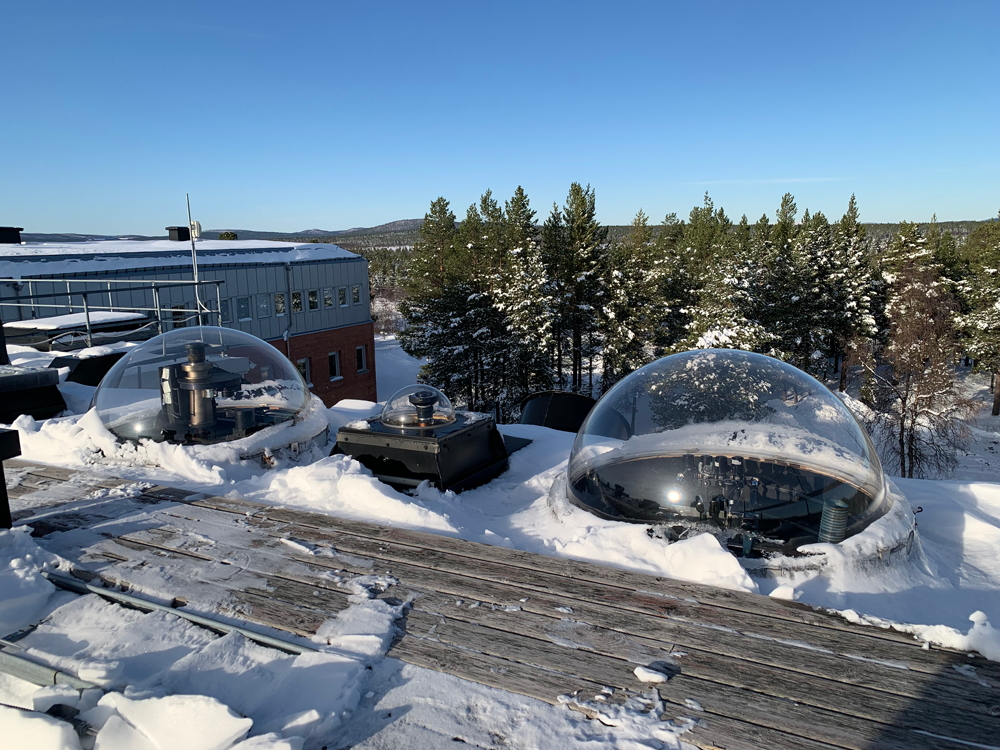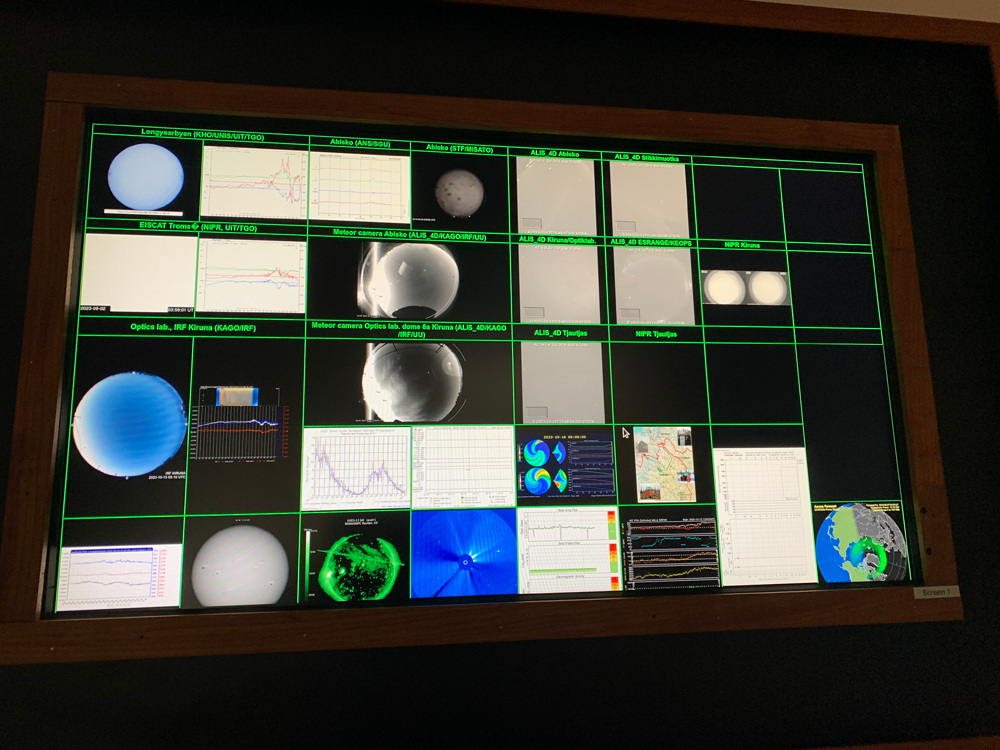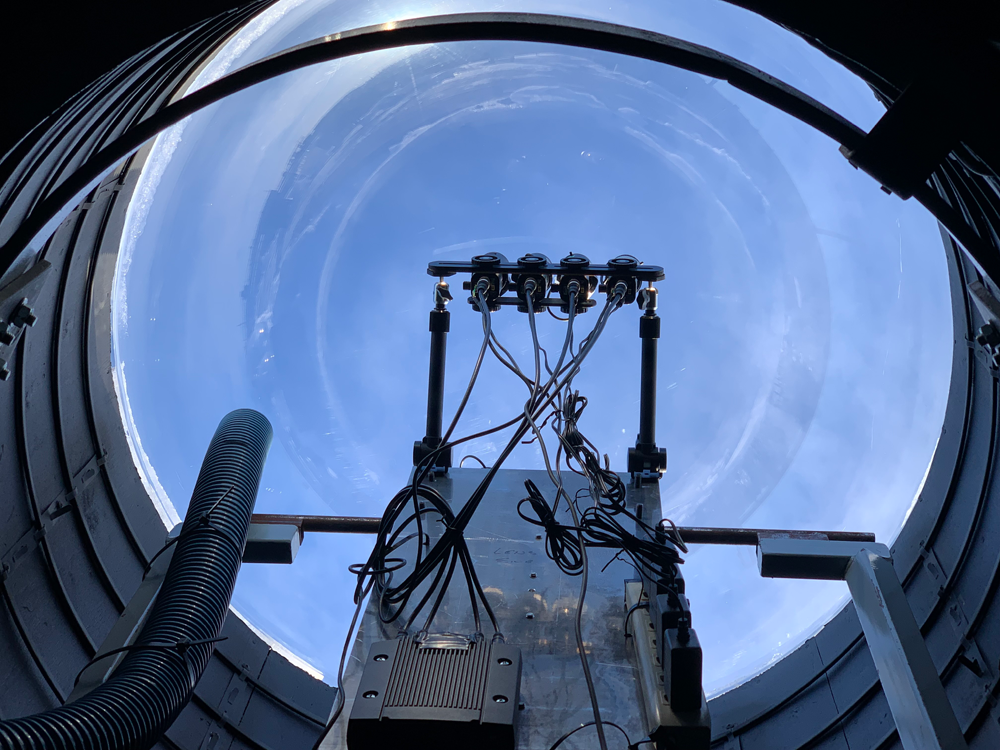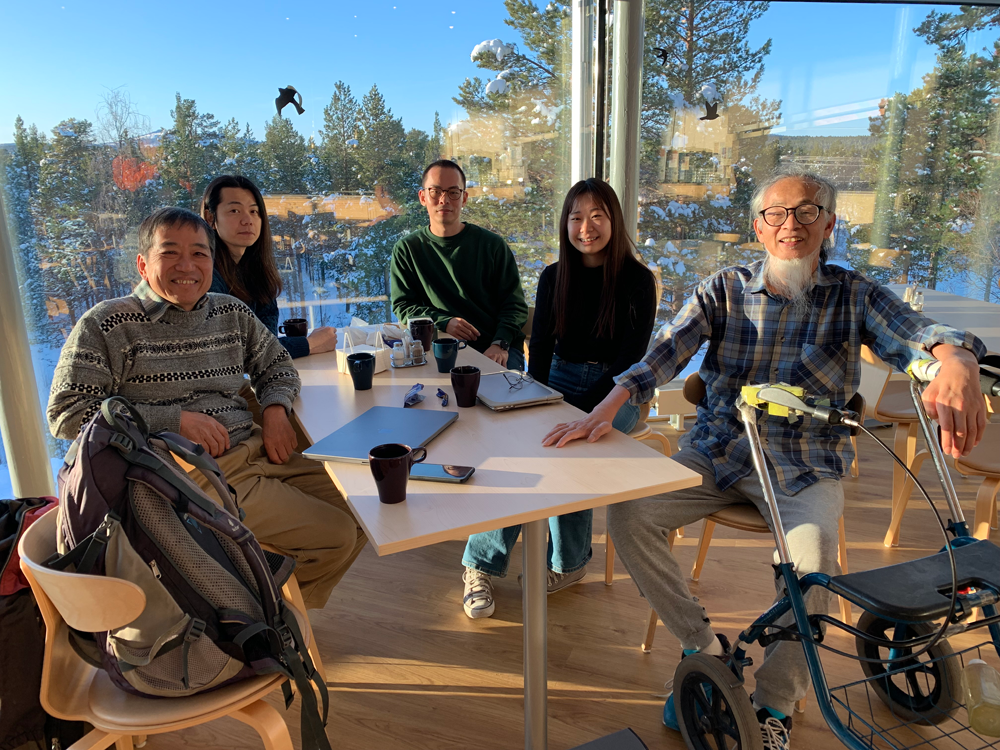Full-scale aurora observations begin
Following last month's visit, I came again to KEOPS (Kiruna Esrange Optical Platform Site) in SSC (Esrange Space center) in Kiruna, Sweden. One of the objectives of this visit was to solve the "false aurora problem," in which the green LEDs emitted by the instruments installed in the hut look like auroras due to reflections from the inside of the dome. To solve this problem, a black cloth was placed between the dome and the observation equipment, and a hole was made through which only the camera lens could pass. From the outside, the camera lens can be seen sticking its head out.
It has been hot in Japan, but it is already winter in Kiruna. It snowed during our stay. We tried to go up to the top of the hill where the observation hut is located, but our car got stuck in the snow within 100 m. We switched to the SSC staff's four-wheel drive car, but it got stuck again halfway up the road. We waited for the snowplow to come in and finally made it up. The area around the hut was also covered with snow. We finally got the door open after shoveling the snow at the entrance.
The aurora this time seemed weaker and darker than in September. Even so, a double curtain of aurora appeared, and if you look closely, you can see that the top was purple and the bottom green. Aurora observations by the All-Sky Camera and the Hyperspectral Camera have begun.
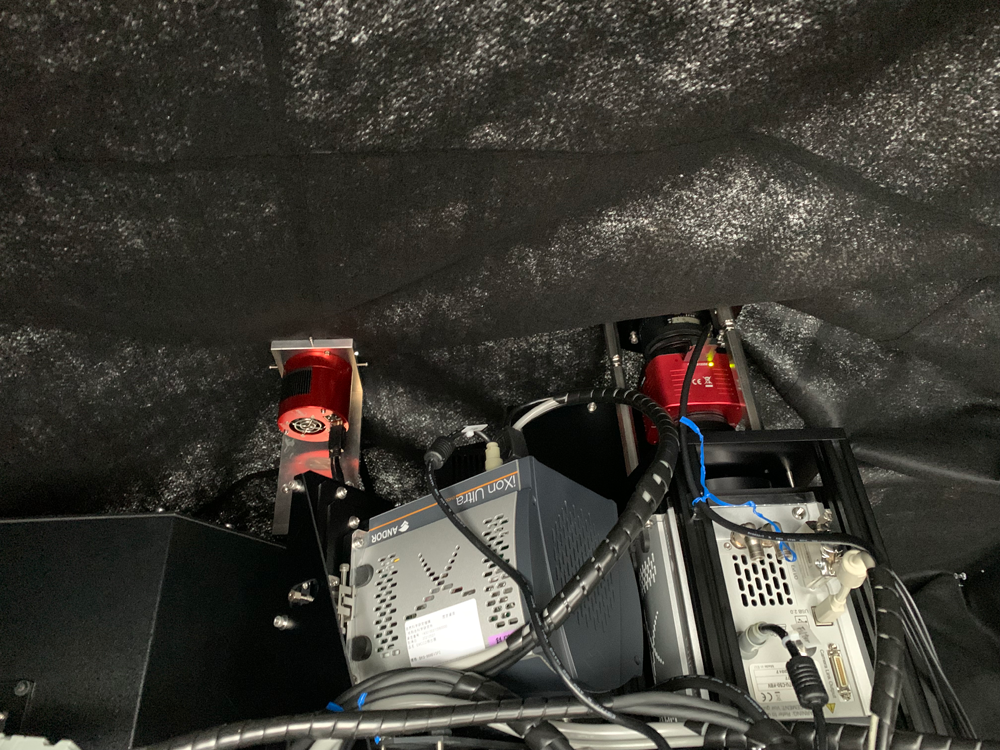
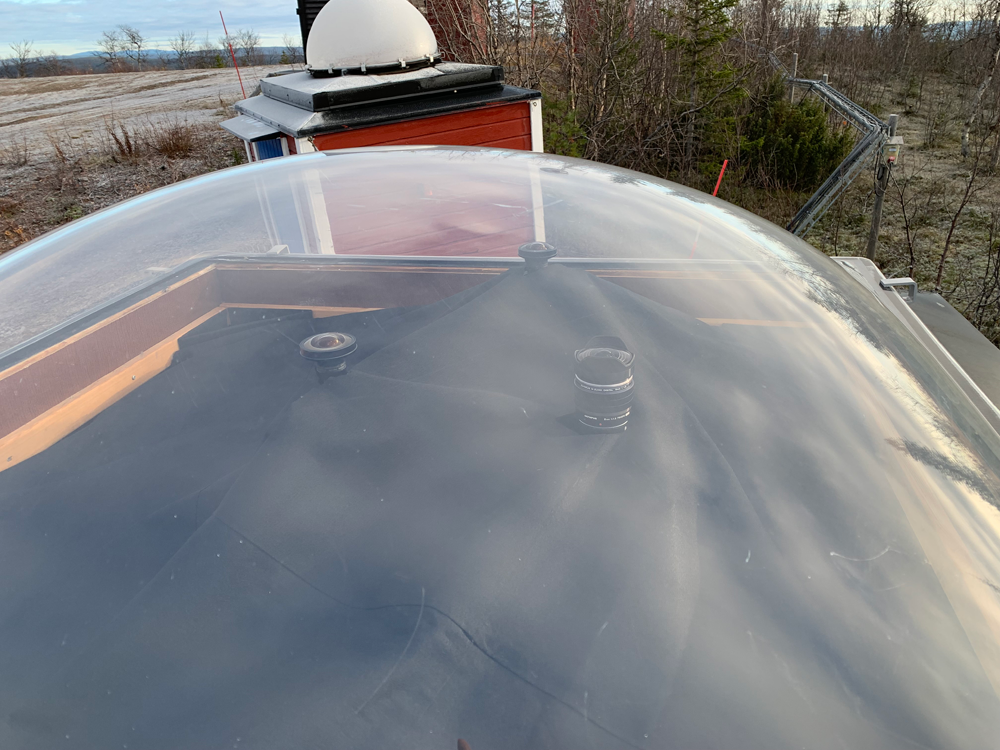
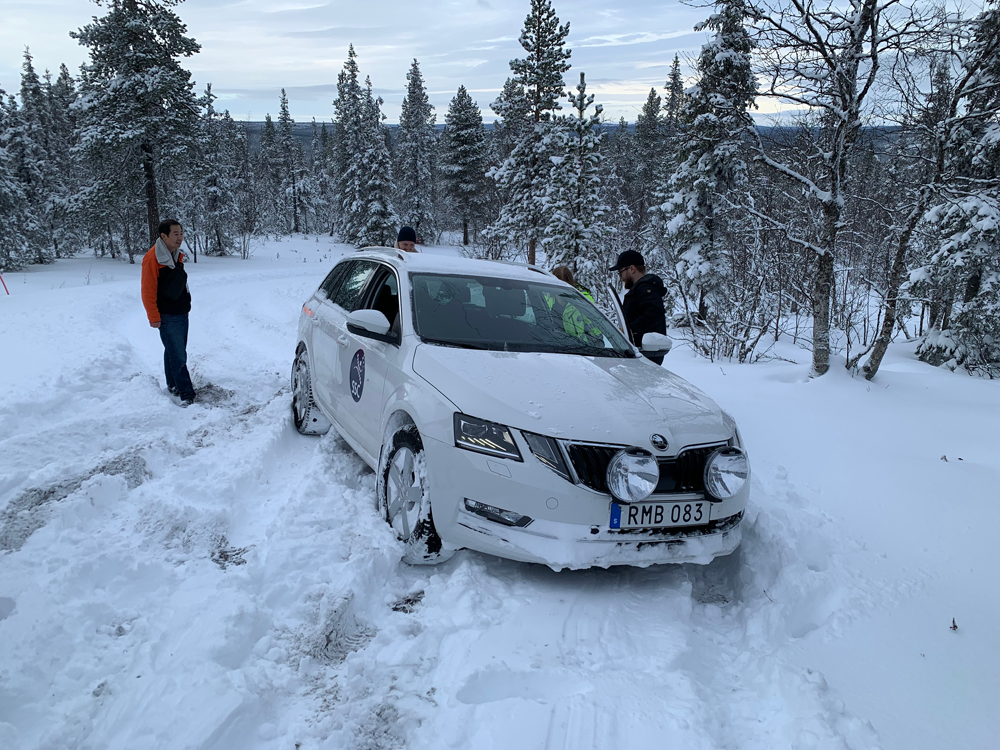
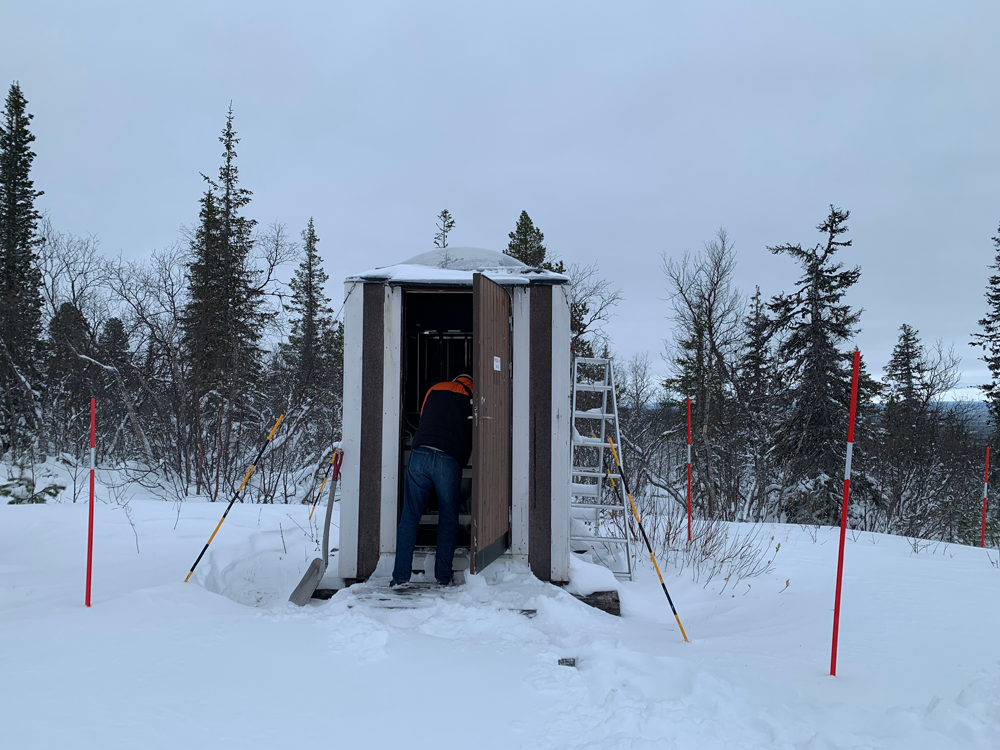
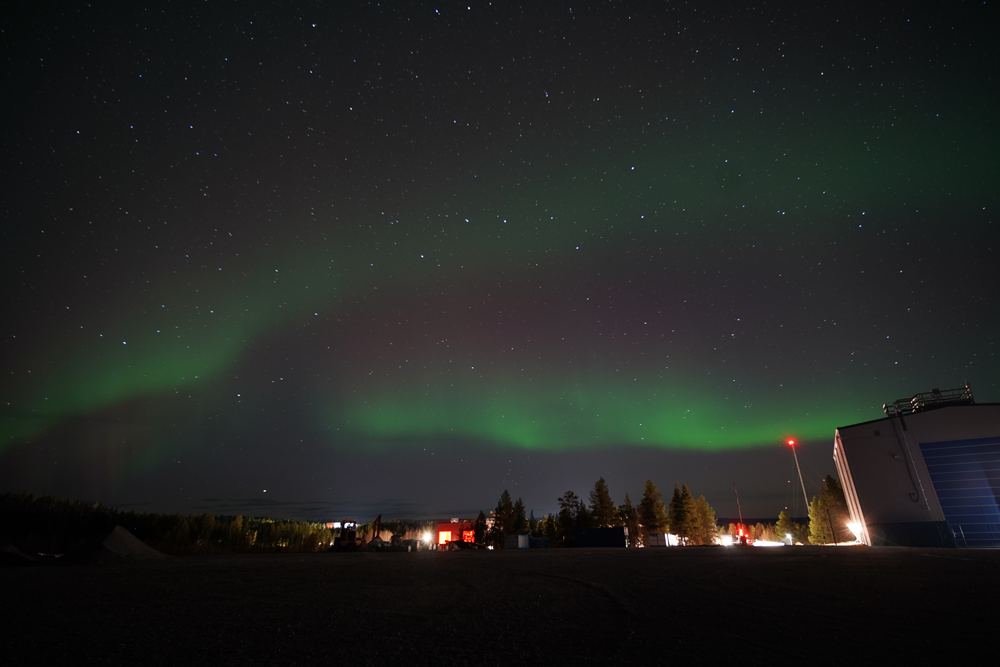

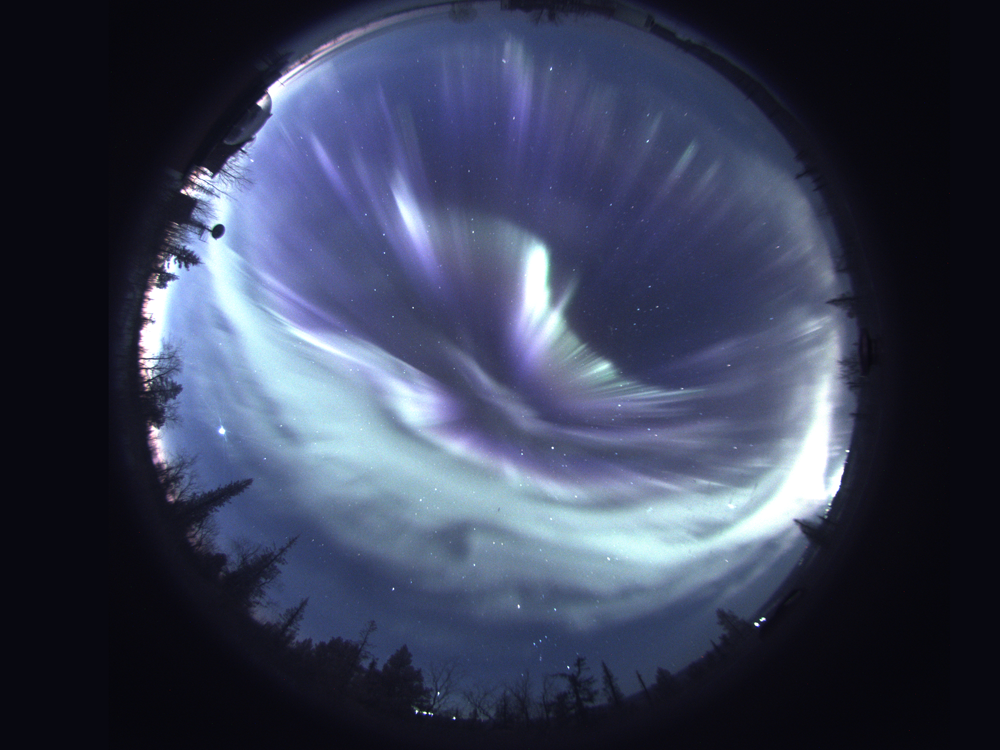
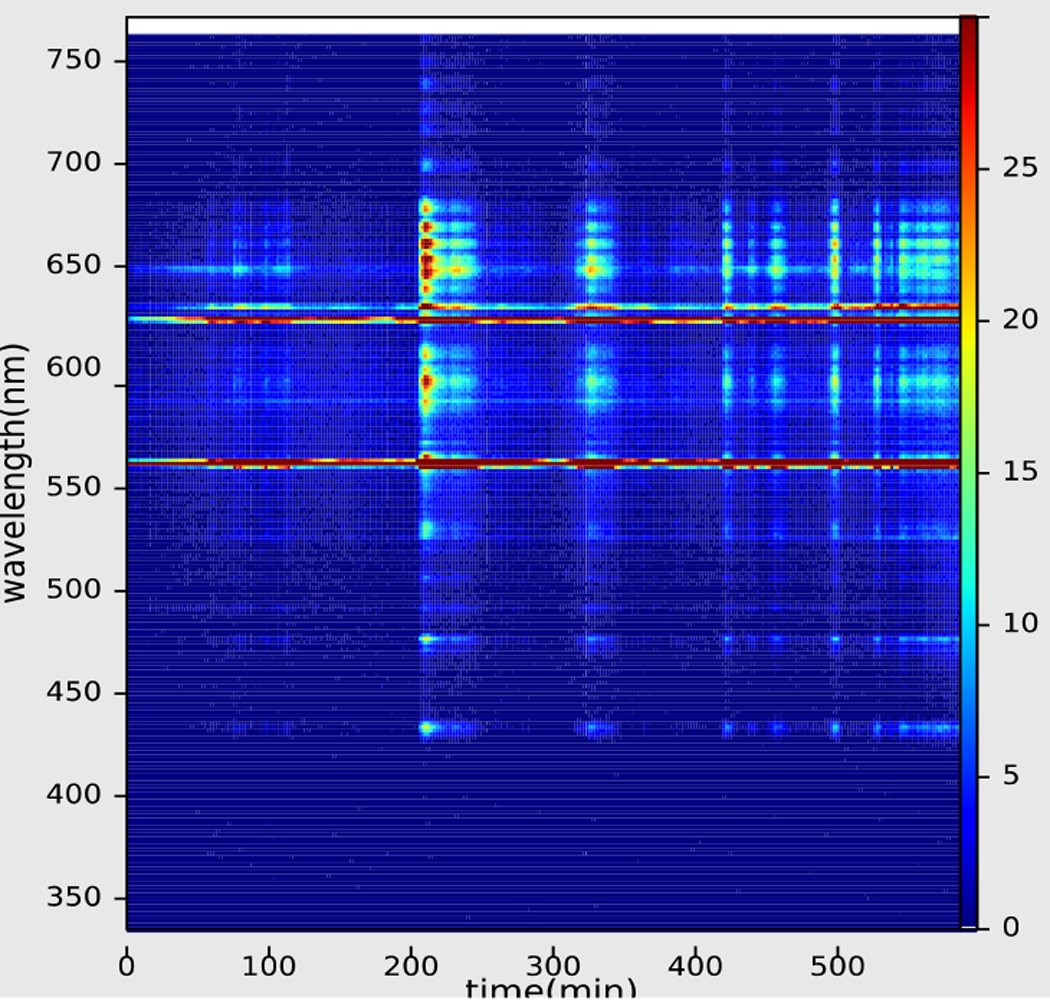
In addition to the SSC, Kiruna is also home to the Swedish Institute of Space Physics IRF, an aurora observation facility located in the suburbs, which I visited. On the roof of the building are a series of observation domes, with multiple cameras pointed at the sky. Some of the cameras had various interference filters attached to the front in order to capture all-sky images at different wavelengths.
I had the opportunity to have a discussion with Mr. Yamauchi's group, who has been conducting research at the IRF for many years. They were very interested in our first data from the NIDS spectrograph, and we agreed to collaborate with them. It seems that there is no other auroral all-sky observation using a spectrograph, and I was very happy to hear that "it is valuable data.
